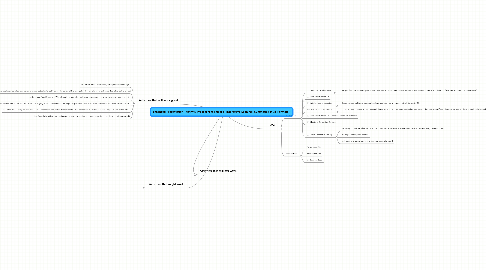
1. Activities that will work great
1.1. 7!. Debrief (Great opportunity for Experiential learning!)
1.2. 12!. Fish Bowl (Can be used for teaching learners how to interact with a different culture. Team learners up, give written data sheets, put them in the center of the room, after the role plays, the instructor debriefs with the group.)
1.3. 14!. Idea Map (Modify this to a White Board, Instructor-led brainstorming session -- anyone can record on the board)
1.4. 18!. Interpreted Lecture (puts learners on the spot but is not challenging -- this could be fun). This helps people understand even when they are afraid to ask for clarification.
1.5. 22!. One, Two, Four (This draws on learner experience and makes it more real to other learners.) We would not follow Thaigi's model to the letter.
1.6. 30!. Superlatives (Ask for most important, most interesting, and most surprising --- let them do it in one word.)
2. Activities that will not work
2.1. 6X. Crossword Lecture (not engaging enough)
2.2. 8X. Dyads and Triads (too much writing for participants...not fun)
2.3. 9X. Egg-Hunt (Just say no!)
2.4. 10X. Essence (too much writing for participants...not fun)
2.5. 13X. Glossary (Boring!)
2.6. 15X. Intelligent Interludes (No means No!)
2.7. 16X. Intelligent Interruptions (Puts learners on the spot).
2.8. 17X. Interactive Story (Puts learners on the spot; too time consuming (presents pertinent and non-pertinent data).
2.9. 19X. Item List (This will result in key information not being presented.)
2.10. 20X. Job Aid (Not applicable. This is more suited for SOPs.)
2.11. 25X. Questionnaire Analysis (More suited for assessments)
2.12. 27X. Selected Questions (Requires pre-work.)
2.13. 28X. Shouting Match (Our content is not (should not) be controversial.)
2.14. 29X. Slide Sets (This is better suited for procedural topics.)
2.15. 33X. Team Quiz (Not so much)
2.16. 34X. Teamwork (Not for us -- would work well with procedural content.)
2.17. 36X. Two Minds (Calls for two divergent points of view.)
3. Activities that might work
3.1. 1. Best Summary
3.2. 2. Bingo (cards should have pictures and text)
3.3. 3. Bites (if SMEs are available and learners are interested)
3.4. 4. Brainstorm (Leading questions: What do we want to know? What do we already know (or think we do?) - incorporate concept analysis in this one, have presenter ask concept analysis questions of audience? - could use mind map for structure on board
3.5. 5. Concept Analysis (might be better for comprehensive topics (i.e. What is culture? - Maybe a good lead in: How do you know culture when you see it?))
3.6. 11. Fictional Case Study (Tell a story and pick apart what happened, what should have happened, etc.) [This could be the final exercise of the day, putting previously learned content to use.]
3.7. 21. Multilevel Coaching (Modify: Put a topic on the board and have groups present information on them. Instructor would have to provide clarification since students are not all likely to have a grasp of some of the topics.)
3.8. 23. Press Conference [Change to an interview exercise] (groups could be broken into U.S. Soldiers and local nationals (simulated)).
3.9. 24. Question Cards [Option 1: brief presentation, each learner write ONE Q&A, then go through the questions as an entire class]. [Option 2: divide class into two groups and swap Qs for points, groups quiz each other.]
3.10. 26. Rapid Reflection (This is good - it gets learners to write key topics down. Modify to put reflections in a hat instead of passing them around.)
3.11. 31. Table Talk (Could work if we provided roles/characteristics to make it fun. The group could debrief looking for good things and balance between the approaches.)
3.12. 32. Talk Show (This would work if we provided simulated experts (learners) with data sheets that had held the sum of their knowledge -- could be fun. Perhaps allow learners to make-up/guess answers to questions that are not on their card.)
3.13. 35. True or False (Easily implemented & can provide value).
4. UAE
4.1. Course Flow
4.1.1. (1) 15min Fish Bowl Activity
4.1.1.1. Design a few interaction scripts (man on man, woman on woman, man on woman, friend vs acquaintance, etc), have confederates act them out, then debrief.
4.1.2. (2) 5min Activity Wrap-Up
4.1.3. (3) 5min Lecture: Introduction
4.1.3.1. Include slides on history, geography, demographics, role in region, and relations with U.S.
4.1.4. (4)15min Jets & Sharks Activity
4.1.4.1. Divide class into two groups (Jets and Sharks), pass out scripts, have teams alternate reading their part with different learners each time. The script will include conflicts between individual-oriented culture group vs group-oriented culture group
4.1.5. (5) 5min Activity Wrap-Up / Lecture: Social/Culture Norms
4.1.6. (6) 5 Lecture: Remaining Content
4.1.7. (7) 10min Superlative Activity
4.1.7.1. As a wrap up, ask each learner to, in one or two words, indicate what was the most surprising or enlightening to them.
4.1.7.2. No duplicates/repeats allowed.
4.1.7.3. Instructor or a learner can record these on the white board.
4.2. Deliverables
4.2.1. Presentation File
4.2.2. Instructor Guide
4.2.3. Student Handouts
